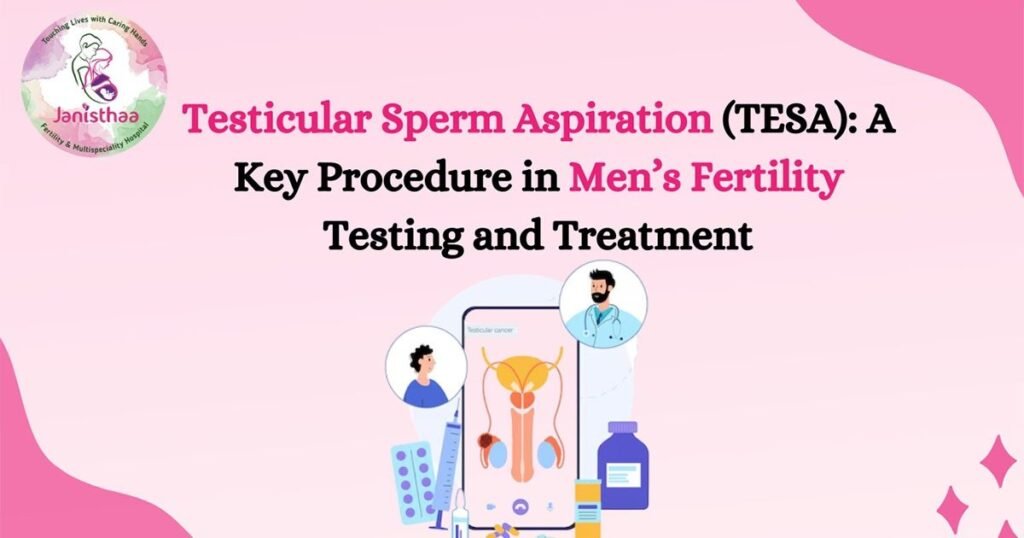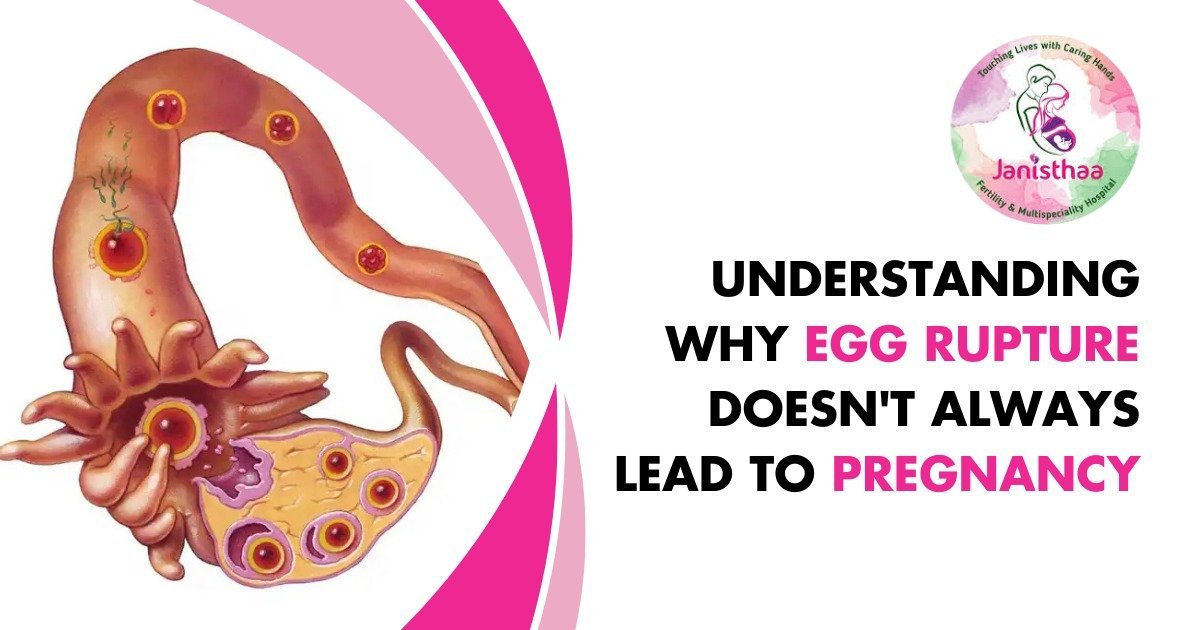Male infertility affects millions of couples worldwide, with conditions like azoospermia (absence of sperm in semen) making natural conception difficult. Testicular Sperm Aspiration (TESA) is a minimally invasive procedure that allows sperm retrieval directly from the testicles, providing hope for men struggling with fertility issues. This technique is commonly used in IVF (In Vitro Fertilization) and ICSI (Intracytoplasmic Sperm Injection) to help men with low or no sperm in their ejaculate conceive successfully.
TESA is particularly beneficial for men with obstructive azoospermia, a condition where sperm production occurs but is blocked from reaching the semen. It is also used in cases where sperm retrieval from ejaculation is not possible, such as after a vasectomy or due to genetic conditions affecting sperm production. The procedure is performed under local anesthesia, ensuring minimal discomfort and a quick recovery time.
Choosing the right fertility specialist and clinic for TESA is crucial for improving success rates and ensuring proper medical guidance. A well-equipped fertility center will not only provide advanced sperm retrieval techniques but also offer comprehensive pre-procedure evaluations, accurate diagnostics, and seamless insurance and financial planning. In this guide, we’ll explore how TESA works, its benefits, success rates, costs, and what to expect before and after the procedure.
What is TESA & Who Needs It?
Testicular Sperm Aspiration (TESA) is a minimally invasive sperm retrieval procedure designed for men who cannot produce sperm in their ejaculate. It involves using a fine needle to extract sperm directly from the testicles, which can then be used for ICSI (Intracytoplasmic Sperm Injection) or IVF (In Vitro Fertilization). TESA is commonly recommended for men with obstructive azoospermia, where sperm production is normal but blocked due to a vasectomy, infection, or congenital absence of the vas deferens. It is also used for men with non-obstructive azoospermia, where sperm production is extremely low due to hormonal imbalances, genetic disorders, or testicular dysfunction
TESA vs. Other Sperm Retrieval Methods
When it comes to surgical sperm retrieval, TESA is one of several available options. Here’s how it compares to other methods:
Comparison Table of Sperm Retrieval Techniques:
Procedure | Invasiveness | Best For | Anesthesia | Success Rate |
TESA (Testicular Sperm Aspiration) | Minimally invasive | Obstructive azoospermia | Local | Moderate |
TESE (Testicular Sperm Extraction) | Surgical | Non-obstructive azoospermia | Local/General | Higher |
PESA (Percutaneous Epididymal Sperm Aspiration) | Minimally invasive | Blocked sperm ducts | Local | Moderate |
Micro-TESE (Microsurgical TESE) | Highly invasive | Severe infertility cases | General | Highest |
Key Differences:
TESA is less invasive than TESE and Micro-TESE, making it a preferred choice for men with obstructive infertility.
Micro-TESE has the highest sperm retrieval success rate but requires a more complex surgical approach.
PESA is used for men whose sperm is blocked in the epididymis, whereas TESA retrieves sperm directly from the testicles.
How the TESA Procedure Works
TESA is performed as an outpatient procedure under local anesthesia, ensuring minimal discomfort and a quick recovery. Below is a step-by-step breakdown of what to expect:
Step-by-Step Process:
✔ Step 1: The patient receives local anesthesia to numb the testicular area.
✔ Step 2: A thin needle is inserted into the testicle to aspirate sperm-containing tissue.
✔ Step 3: The extracted sample is immediately examined under a microscope for viable sperm.
✔ Step 4: If sufficient sperm is found, it is either used fresh for ICSI or cryopreserved for future IVF cycles.
✔ Step 5: The patient is monitored briefly and can return home the same day.
Recovery & Post-Procedure Care:
Mild discomfort or swelling may be present for 24-48 hours.
Patients are advised to avoid strenuous activity for a few days.
Sperm quality is assessed immediately for use in assisted reproduction techniques like ICSI.
How Much Does TESA Cost?
The cost of Testicular Sperm Aspiration (TESA) varies depending on location, clinic reputation, doctor’s expertise, and additional laboratory services required for sperm processing. On average, the cost breakdown looks like this:
TESA Procedure Cost Estimates by Country:
Country | Cost Range (USD) | Insurance Coverage |
USA | $3,000 – $5,000 | Partial Coverage (Varies by Plan) |
UK | £2,500 – £4,000 | Limited Coverage |
India | ₹40,000 – ₹80,000 | Some Plans Cover |
Australia | $2,500 – $4,500 | Partial Coverage |
Canada | $3,500 – $6,000 | Limited Public Coverage |
💡 Note: These figures do not include additional costs such as anesthesia, sperm freezing, or ICSI procedures, which may increase the overall expense.
Does Insurance Cover TESA?
Insurance coverage for TESA and fertility treatments depends on your provider, country, and policy terms. Many private insurance companies classify TESA as an elective procedure, which may limit coverage. However, some infertility-related policies do cover diagnostic and treatment procedures if linked to a medical necessity.
Understanding Insurance Policies for TESA:
✔ Check if Male Infertility Treatments Are Covered – Some policies cover TESA if azoospermia is diagnosed as a medical condition.
✔ Look for Policies Covering Assisted Reproductive Technology (ART) – Plans that cover IVF or ICSI may also partially cover sperm retrieval techniques like TESA.
✔ Understand the Pre-Authorization Requirements – Many insurers require specific ICD-10 codes and medical justifications before approving a claim.
ICD-10 Codes for TESA and Related Procedures
To maximize insurance approval, it’s important to use the correct ICD-10 codes when submitting a claim. Here are some common ICD-10 codes related to TESA:
Condition/Procedure | ICD-10 Code |
Testicular Sperm Aspiration (TESA) | Z31.83 |
Male Infertility (Unspecified) | N46.9 |
Azoospermia | N46.02 |
Assisted Reproductive Procedures | Z31.82 |
Insurance Tip: Before scheduling TESA, consult with your insurance provider and ensure that your fertility clinic submits the correct codes to prevent claim denials.
Why Choosing the Right Fertility Clinic for TESA Matters
Selecting the best fertility clinicfor Testicular Sperm Aspiration (TESA) is a crucial step in ensuring a successful sperm retrieval procedure and increasing the chances of a positive outcome in IVF or ICSI treatments. Since TESA requires expertise in male infertility treatments, advanced lab facilities, and proper post-procedure care, the clinic you choose can directly impact your fertility journey.
A top-rated TESA clinic should offer high success rates, experienced urologists, and seamless integration with IVF treatments, ensuring that sperm retrieved can be used immediately or cryopreserved for future procedures. Additionally, insurance coverage and financing options should be considered to avoid unexpected costs.
How TESA is Changing Lives for Men with Infertility
Male infertility can be a major emotional and physical challenge, especially for men diagnosed with azoospermia (zero sperm in ejaculate) or those who have faced multiple failed IVF attempts. Testicular Sperm Aspiration (TESA) has emerged as a life-changing solution, allowing men to become biological fathers even when traditional sperm retrieval methods fail.
Case Study: A Couple with Multiple Failed IVF Cycles Achieves Success with TESA
Patient Profile:
Name: Daniel & Sarah (Names Changed for Privacy)
Age: 39 & 35
Diagnosis: Severe Male Factor Infertility – Poor Sperm Motility and Quality
Treatment: TESA + IVF for Improved Sperm Selection
Challenge:
Daniel and Sarah had undergone two failed IVF cycles using ejaculated sperm. The embryologist found that Daniel’s sperm had poor motility and DNA fragmentation, leading to poor embryo quality and failed implantations. They were losing hope and considering donor sperm.
Solution:
The fertility specialist suggested trying TESA to extract sperm directly from the testicles, where it may be of better quality compared to ejaculated sperm. The couple agreed to the procedure, and TESA-retrieved sperm showed improved motility and lower DNA fragmentation.
Outcome:
On their second IVF cycle, using TESA-derived sperm, they achieved a successful pregnancy! Sarah gave birth to a healthy baby girl after years of failed fertility treatments.
Key Takeaway: For men with poor sperm quality, TESA can be a game-changer by providing higher-quality sperm directly from the testicles, leading to improved IVF success rates.
Why TESA is a Game-Changer in Men’s Fertility Treatment
Testicular Sperm Aspiration (TESA) has revolutionized male fertility treatment, offering a minimally invasive and highly effective solution for men struggling with azoospermia or poor sperm quality. Unlike traditional sperm retrieval methods, TESA allows for direct extraction of sperm from the testicles, increasing the chances of successful fertilization in IVForICSI treatments. For men who have undergone vasectomy, have blocked sperm ducts, or suffer from non-obstructive azoospermia, TESA provides a real chance at biological fatherhood. When performed at a reputable fertility clinic with experienced specialists, the success rates are significantly higher, ensuring the best possible outcome for patients.
Choosing the right fertility center is just as crucial as the procedure itself. Top IVF clinics offer comprehensive TESA services, including pre-treatment evaluations, advanced sperm processing, and seamless integration with fertility treatments like ICSI. If you’re considering TESA, don’t leave your fertility journey to chance—book a consultationwith leading fertility experts today! Take the first step towards parenthood and explore the best treatment options tailored to your needs.







